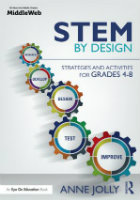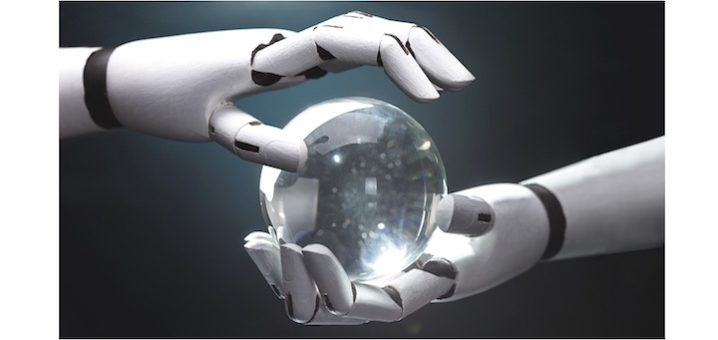STEM Skills Kids Need for Our Volatile Future
A MiddleWeb Blog
 Continual learning – what a fun idea! The mental model of continual learning I created for myself several years ago involved propping up my feet for a relaxing read. Over time my view of continual learning morphed into a just-in-time, fast-tracked essentials.
Continual learning – what a fun idea! The mental model of continual learning I created for myself several years ago involved propping up my feet for a relaxing read. Over time my view of continual learning morphed into a just-in-time, fast-tracked essentials.
NOW: For the last six months continual learning has been my pressure-cooker, accelerated modus operandi!
In late November I accepted a six-week gig to edit (and, as it later turned out, to write) a workforce-oriented STEM curriculum for middle level kids. Before doing that I naively asked myself, How hard can that be? (Hello? Earth to Anne?)
Talk about a learning curve! While I diligently study and keep up with classroom STEM essentials, that wasn’t enough. I obviously needed to incorporate more focus on the real workplace in my STEM explorations.
Driven by fast-paced digital technology advances (I had no idea just how fast-paced), business and industry today are responding to constant, quickly developing needs in employee knowledge, adaptability, flexibility, and skills.
As fellow educators, you won’t be surprised to learn that my six-week assignment turned into six months – and stopped then only because the materials had to go to the printer. Looking ahead, the first-round curriculum will need to be revisited, adjusted, and re-edited as information comes in from users.
Insights from a Tour of the Real World
While we wait for round two, I’d like to pass along a couple of new and reinforced insights from this whirlwind experience.
Coding:
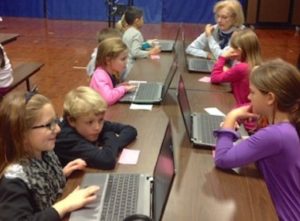
Knowing how to code and program gives kids a real advantage in their computer-driven world. Think of learning computer code as analogous to learning alphabet letters.
Programming simulates combining letters to form words and write content. Both are part of a basic communication process and help students to communicate successfully in their world. I’ve gone from being a coding fan to a cheerleader. Kids need to code!
Collaboration:
Two other teachers and I worked together with business people to understand the current workplace situation and prepare to write this curriculum.
That experience gave momentum to my conviction that teachers must work together with personnel from the business world – the ones who can recognize and convey upcoming requirements. The reward will be ongoing collaboration and support that results in students being prepared to live and participate successfully in the workforce.
The obvious AHA (can aha’s be obvious?): if you’re developing lessons to give students skills for their future, be sure to invite knowledgeable business folk to the table.
You’ll probably discover that businesses expect employees to work smoothly and effectively in teams. So collaboration is another competency businesses are begging educators to help kids develop.
Curriculum:
As I emerge from the whirlwind, here’s a short list of ideas for writing STEM lessons and curriculum.
1. Use education-minded business people to conceptualize and contribute purpose and goals for the curriculum.
2. Use clued-in frontline teachers to inform and add reality to the curriculum being prepared for the ages they teach and the (also real-world) classrooms they work in.
3. Outline the criteria and constraints the curriculum must meet.
4. Employ informed and talented K-12 teachers to adapt and write the curriculum for kids, including activities, projects, materials, and applications that will engage them and bring about the desired outcomes.
We Live in a Whirlwind World
I’ve rebooted my grasp of how fast digital technology is driving change. You’ve heard that many facts and skills we arm our students with today will be outdated by the time they graduate. Until this assignment I didn’t understand just how many, how outdated, and how fast!
Your students definitely need the ability to continually learn beyond school walls – and the wisdom to understand why. Imagine your classroom as a Learning Center that continually updates your students’ knowledge banks and reinforces their toolkit, and aim for that reality.
Embracing the Future NOW
What will your students’ lives and workplaces look like by 2025? The predictions are fascinating. The World Economic Forum predicts that by 2025 (when current 9th graders graduate!) the first 3-D printed car will come off the production line and the first 3-D printed liver will be transplanted into a patient.
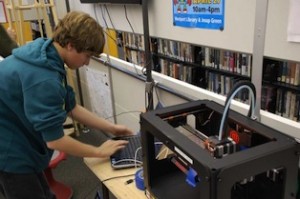
Your students’ world will undergo astonishing advances in virtual reality, wearable technology, androids and robots, artificial intelligence, space technology such as asteroid mining, the Internet of Things, and technologies such as Blockchain, to mention just a few.
Consider this: What do you already know about the technologies mentioned in that previous sentence? FYI – They already exist and are currently in development and operation. Consider the implications of rapid advances in these technologies. You might involve your students in building some powerful future-world scenarios.
A massive technology upheaval is in the making. This can be good or bad: probably both. Interfaith foundation president Frank Kaufman states, “Technology gives bad people power to be worse. It gives good people power to be better. I worry that there exists a world of tech geniuses who don’t know right from wrong and good from bad.”
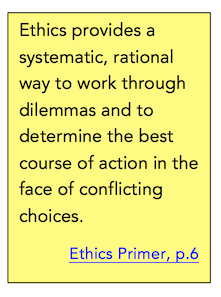
Foresight is THE 21st Century Skill
Looking ahead 20 years, renowned futurist Thomas Frey predicts humanity will change more extensively than in any other period in human history. Future generations are counting on us to prepare citizens who can recognize and cope with that unprecedented change.
Frey says foresight is the most important skill of the 21st Century. We want our kids to anticipate the future – not to be blindsided by the demands of the workforce and the world they inhabit.
To cope with this world and its next iteration, our students will have to master the art of continual learning. Continue transforming your classroom and teach your students to meet and create the future.
